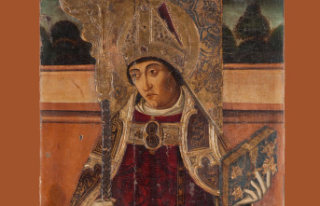The date of February 14 is inextricably associated with Valentine's Day, a holiday celebrated in honor of Saint Valentine, considered one of the first Christian martyrs. The celebration of love on that day by means of gifts, dinners or simply caring among the most romantic has spread throughout the planet, becoming a cultural and above all commercial phenomenon. And all this success, despite the fact that the saint was excluded from the official catalog of saints in 1969.
Well, it's not clear who Valentine was. In fact, it is not even clear if the saint actually existed. And that there was a choice, since half a dozen Valentines have lived within the saints. According to the Catholic Encyclopedia, in the ancient martyrologies (catalogues of the martyrs of the Christian religion) at least three saints of that name are mentioned on the date of February 14.
Let's go by parts. The most widespread legend of Saint Valentine dates back to the third century, when a priest with that name challenged the Roman Emperor Claudius II, who had banned marriages, considering married men to be worse soldiers. Valentine defied that rule and continued to marry the lovers, which led him to be arrested and taken to the prefect of Rome. As the priest did not want to renounce his faith, he ended up being beheaded and buried on February 14, 270 at the Flamina Gate, the entrance to Rome from Via Flaminia.
Of the rest of the candidates for patron saint of lovers, the bishop of Pignataro Interamna (current Terni, in Italy) stands out, a contemporary of the previous Valentine and who boasted an extensive curriculum of evangelization, healing and miracles, a service sheet that earned him end, in the year 273, also beheaded. Of the third Valentine it is only known that he was a general martyred in Africa along with several of his companions.
Although there is no evidence of the existence of any of the three candidates for Valentine's Day, the Church established the celebration of this saint in the year 498. Precisely, given the absence of authenticity evidence about his life and work, on May 10, In 1969, Pope Paul VI excluded 33 saints for this reason, including the patron saint of lovers. Valentine's Day, along with Saint Barbara, Saint George or Saint Christopher, was removed from the official catalog and from the liturgical calendar.
The supposed relics of the patron saint of lovers, Saint Valentine, are scattered around churches in Rome, Dublin, Prague or Vienna; there are more relics than parts of a human body. Madrid also has some remains of the saint. These were delivered two centuries ago as a gift from the Pope to King Carlos I, who entrusted them to the order of the Piarists, and since then they rest in the Madrid Church of San Antón.
Although there is no evidence to prove it either, it is said that the origin of the Valentine's Day celebration is found in the lupercal festivities, which took place at the decline of the Roman Empire with a ritual that consisted of the sacrifice of a goat and in a procession, in which women were whipped on their hands and backs to make them fertile.
Much later, specifically in the year 1382, the first literary reference that confirmed the existence of Valentine's Day appeared. It is about the poem Parliament of the Birds, by the English playwright Geoffrey Chaucer. Already in 1416, there is what is considered the first Valentine's love letter, written in prison by Duke Carlos de Orleans to his beloved Benne de Armagnac. Since then, and until the middle of the 19th century, greeting cards began to be extended as gifts between lovers in Western countries.
Modern Valentine's Day, understood as the day to celebrate love with gifts, landed in Spain in 1948. It was José 'Pepín' Fernández, founder of the Galerías Preciados department store, who imported from the United States the fashion of giving flowers and chocolates to the loved one every February 14. The businessman had already adopted other commercial festivities, such as Mother's Day or Father's Day, so he launched a campaign for customers to buy details for their loved ones.
According to the criteria of The Trust Project












